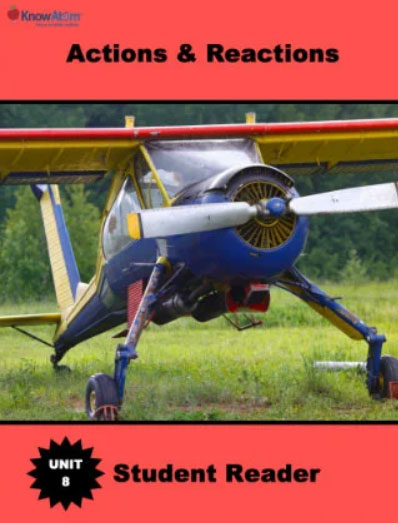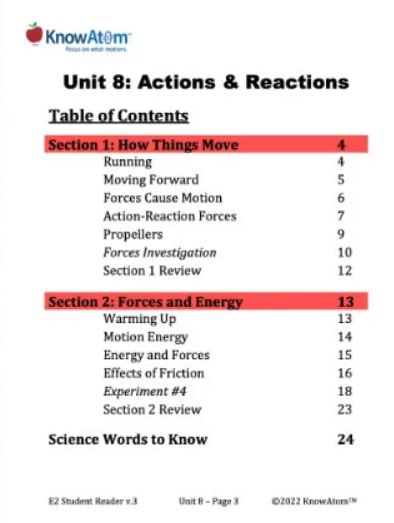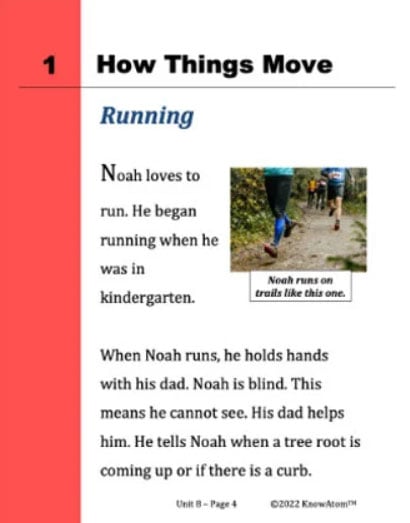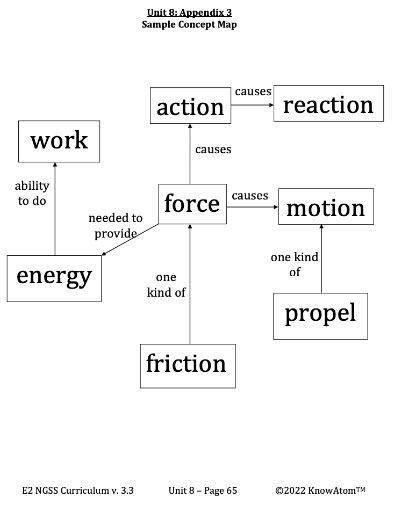In this lesson, students explore the relationship between forces and motion. They build a propeller car to observe action-reaction forces and then investigate how the car’s motion is affected by the magnitude of the force applied to it.
In the last unit, students explored how shelters help animals survive in their environment. In this unit, students investigate the relationship between forces and motion, building propeller cars to observe action-reaction forces, the relationship between the distance their car travels and the amount of force applied, and how friction affects motion. This page highlights the first lesson in this unit which has students exploring the science phenomena of action and reaction forces.
The science background section gives teachers in-depth information about the science phenomena being studied (forces and motion).
Forces play a major role in running. A force is a push or a pull that acts on an object, changing its speed, direction, or shape.
Forces are needed to change the motion of any object because of the law of inertia, which is also called Newton’s first law of motion. This law is named in honor of the English scientist Isaac Newton, who defined the three laws of motion. According to the law of inertia, an object at rest will remain at rest and an object in motion will remain in motion unless an outside force acts on it.
For example, propulsion is the force applied by the runner’s muscles to move the runner forward. To propel means to push forward. How much the runner’s speed increases, also called acceleration, depends on how much force the runner exerts on the ground. This is because of Newton’s second law of motion, which states that force equals mass times acceleration. A greater force applied to an object will cause that object to accelerate more.
An action is a change caused by a force. A reaction is an action that occurs as a result of another action. We can see this when a balloon is released and flies around the room. The action of the air going backwards out of the balloon causes the reaction of the balloon moving forward.
Then, every time the runner’s foot pushes down on the ground, the ground pushes back with an equal and opposite force. This is because of the action-reaction law, which is also Newton’s third law. According to this law, for every action there is an equal and opposite reaction.
In this lesson, students explore the relationship between forces and motion. They build a propeller car to observe action-reaction forces and then investigate how the car’s motion is affected by the magnitude of the force applied to it.

Prepared hands-on materials, full year grade-specific curriculum, and personalized live professional development designed to support mastery of current state science standards.
Action : a change caused by force; moving to a new place and going faster are two actions
Force : a push or a pull that acts on an object, changing its speed, direction, or shape
Friction : a force that slows motion when two objects rub against each other
Energy : the ability to do work
Motion : the movement of an object from one place to another
Propel : to push forward
Reaction : an action that occurs as a result of another action
Work : any change in position, speed , or state of matter due to force
Action-Reaction Forces
Forces always come in pairs. This is known as “action-reaction.” An action is a change caused by force. Moving to a new position is an action. Going faster is also an action.
A reaction is an action that occurs as a result of another action. Gravity pulls you toward the center of Earth. In reaction, the ground has its own force that pushes back. This keeps you from sinking into the ground.
All motion is caused by action-reaction forces. When Noah pushes his foot against the ground, the ground pushes back. This propels him forward. To propel means to push forward.
The more Noah pushes down, the more the ground pushes back. This propels him farther than when he pushes down with less force.
Propellers
Boats and planes also use action-reaction forces to move. They use propellers. Propellers make boats and planes move by spinning around very quickly.
A propeller pushes or pulls an object forward. It does this by pushing a mass of air or water backwards.



large force?” Students record and compare the distance their propeller car traveled when a small force (15 propeller turns) and a large force (30 propeller turns) are applied. Students use the data they gather from their investigation to construct an explanation that either supports or rejects their prediction about whether propeller cars travel further with a large or small force. After students reach consensus and complete the investigation, they come together as a class, presenting their results.
KnowAtom incorporates formative and summative assessments designed to make students thinking visible for deeper student-centered learning.

Standards citation: NGSS Lead States. 2013. Next Generation Science Standards: For States, By States. Washington, DC: The National Academies Press. Neither WestEd nor the lead states and partners that developed the Next Generation Science Standards were involved in the production of this product, and do not endorse it.
